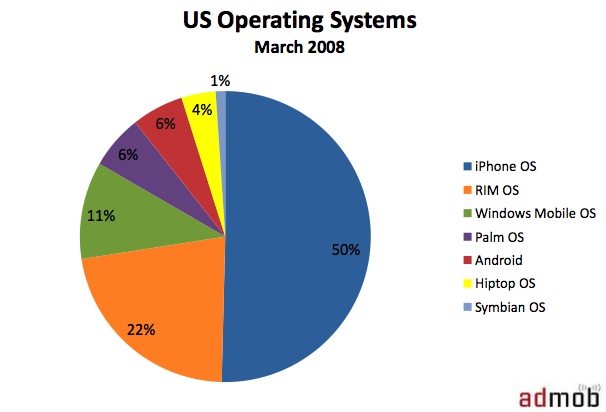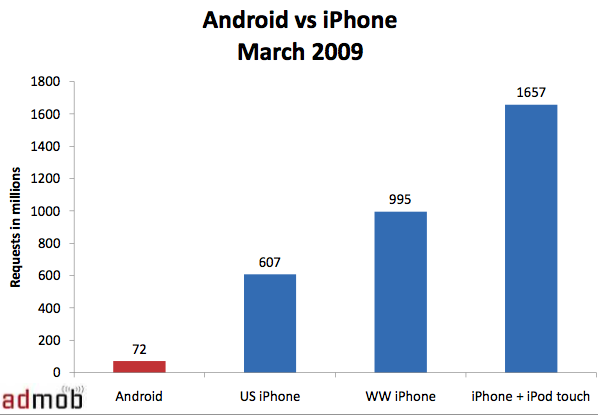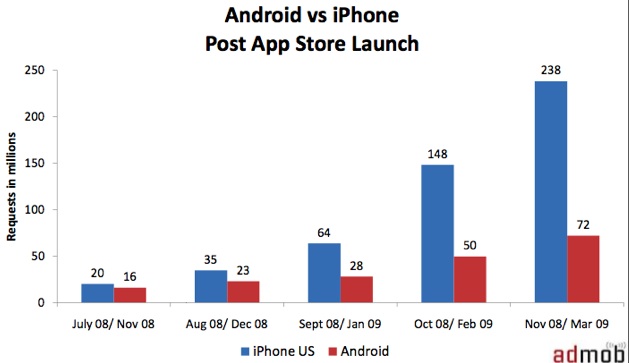from TechCrunch by

Android is making steady gains in mobile ad market share, accounting for 6 percent of all mobile ad requests measured by AdMob in its latest March metrics (full report embedded below). That puts it neck and neck with the Palm OS, compared to a 5 percent /7 percent share split in favor of Palm just one month before.. Windows Mobile Devices also saw a share decline from 13 percent to 11 percent, while Blackberry’s RIM OS gained a point to 22 percent, and the iPhone stayed the same at 50 percent.
AdMob measures ad requests from both mobile browsers and mobile apps, thus its numbers are a good proxy for mobile Web usage (minus paid apps which don’t serve ads, of course). On a device level, the Android G1 (HTC Dream) actually overtook the Palm Centro, becoming the No. 4 smartphone in terms of Web usage in the U.S. (after the iPhone, the Blackberry 8300, and Blackberry 8100).
But the iPhone still dwarfs Android. As a point of comparison, AdMob measured 72 million ad requests for Android in March, 2009 versus 607 million for the iPhone in the U.S. Wordlwide, the iPhone had 995 million ad requests, and if you combine it with the iPod touch the total grows to 1.66 billion.

But is this even a fair comparison? The number of iPhones out there outnumber Android phones by nearly 20 to one (21 million iPhones have been sold to date, compared to estimates of about one million for the G1). Given these ratios, the disparity in Web usage measured by Admob makes sense. As more Android phones are introduced, that should help its numbers.
One major driver of ad requests on both platforms has been the proliferation of standalone apps. Admob measured the growth in ad requests following the launch of each app store on Android and on the iPhone, and found that the growth rate for the iPhone was 88 percent a month versus 47 percent for the Android. But both outgrew other platforms by a wide margin.
Once the Palm Pre comes out and the Blackberry App Store gains more traction, it will be interesting to see whether the relative strength of the iPhone and Android continue.

